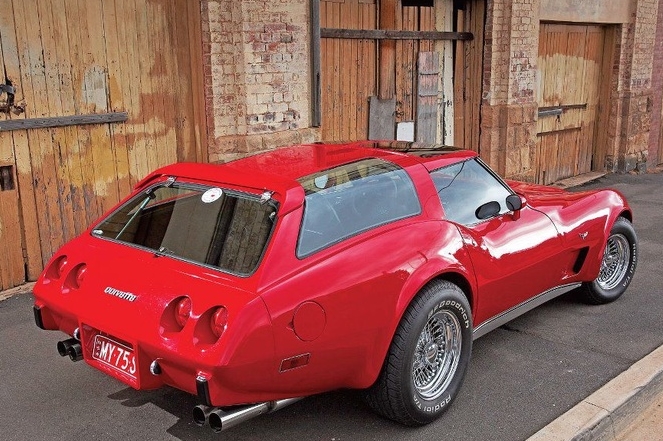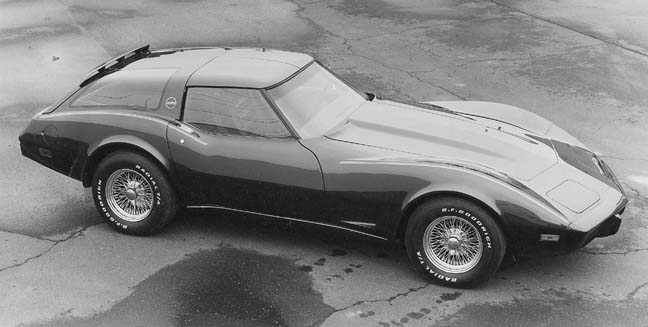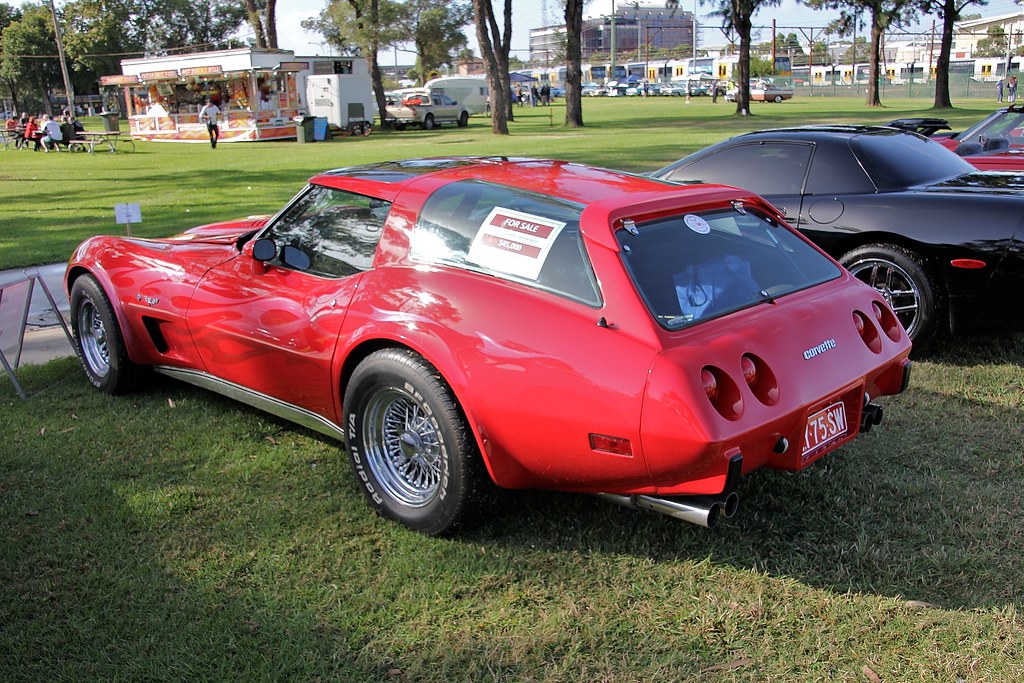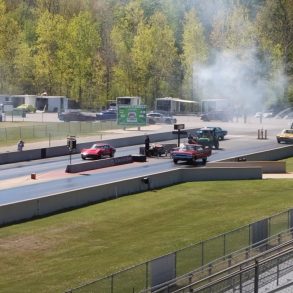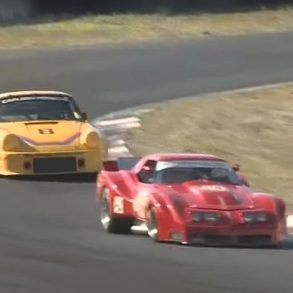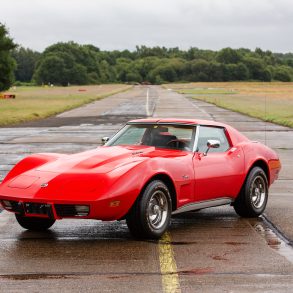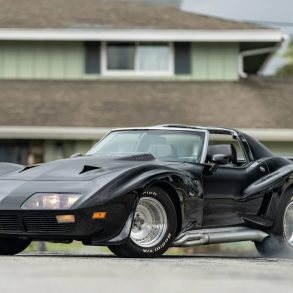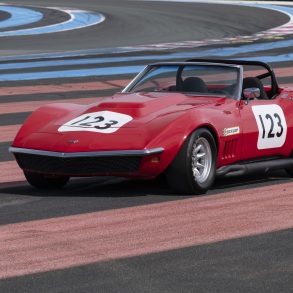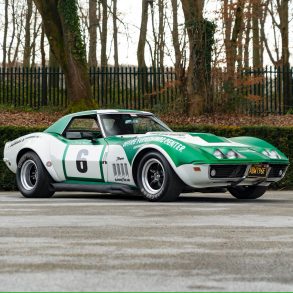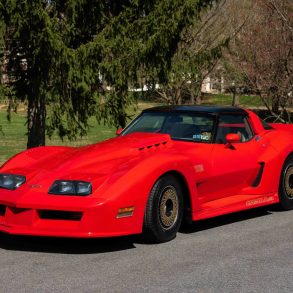Introducing the 1968-1973 Corvette Speedwagon
The Corvette has never been marketed as a “practical” car. Given its limited seating, it has always been considered a weekend cruiser, designed to go fast and to be fun. Despite this, both the first- and second-generation Corvettes offered consumers trunk space. The 1953–1962 Corvettes had reasonable – and some might even say spacious – trunks that could be used for storage of luggage, groceries, or most anything the vehicle’s occupants might want to transport. When the 1963–1967 model came along, that space shrunk in size and became harder to access. Gone was the rear decklid. Instead, occupants had to reach the rear compartment from inside the vehicle….but still, if you could navigate around the front seats, you were rewarded with enough space to transport most luggage, golf clubs, and the like.
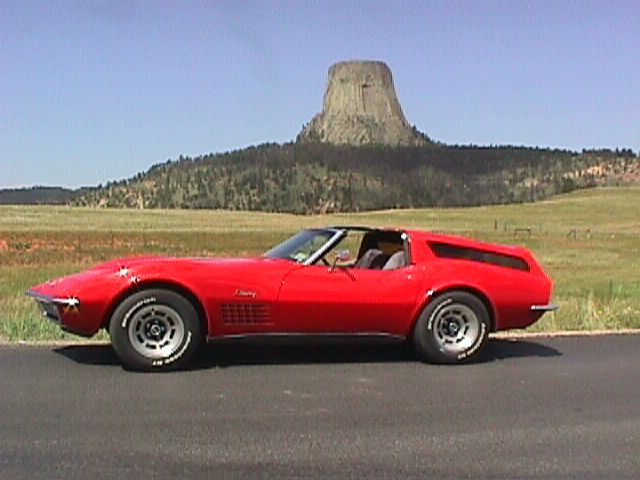
When the third-generation Corvette arrived on the scene in 1968, the problem got even worse. From 1968 to 1977, the Corvette coupes sported a “sugar scoop” rear window assembly that left very little room behind vehicle occupants. Even worse was the convertible model, which used what limited space there was to tuck away its vinyl top. In an effort to remedy this situation, Michigan-based custom car builder Chuck Miller developed a Kammback assembly that could be swapped out on the Corvettes – transforming them from an impractical coupe to a two-passenger station wagon. The original assemblies had narrow side windows, a high, turned-up rear roofline, and a non-functional rear window. They also included a unique front end. Miller started marketing his Kammback kits thru Eckler’s catalogs and it wasn’t long before consumers started customizing the look – and function – of their third-generation Corvettes.
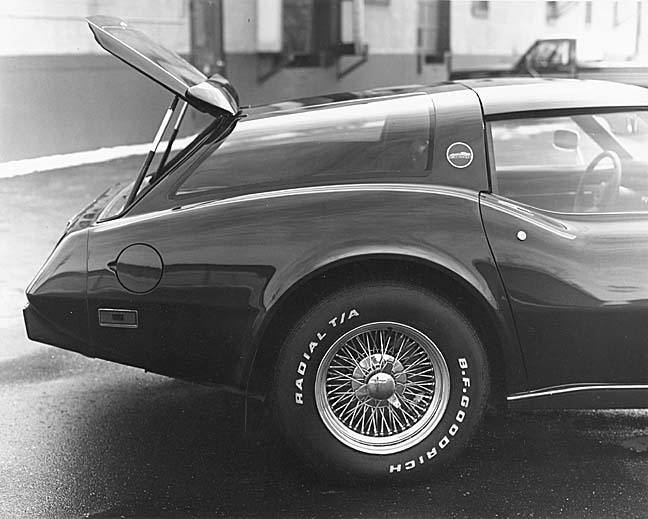
Miller’s design was good, but it also left a lot to be desired. Recognizing Miller’s vision as a step in the right direction, Greenwood Corvettes – an American automotive performance tuning and racing company specializing in Corvette sports cars and race cars founded by automotive enthusiasts and professional race car drivers Burt and John Greenwood – decided they’d improve the original design and create a more functional and better-looking version of the Kammback rear end. Borrowing an idea they saw from a Kammback Camaro being developed by GM, the brothers extended the side glass into the roofline. They also shortened and lowered the original roofline, which allowed the rear glass assembly to align nicely with the rear bumper. Most notable of all, the brothers transformed the rear assembly into a functional hatchback (Miller’s design had been stationary and still required access from inside the car.)
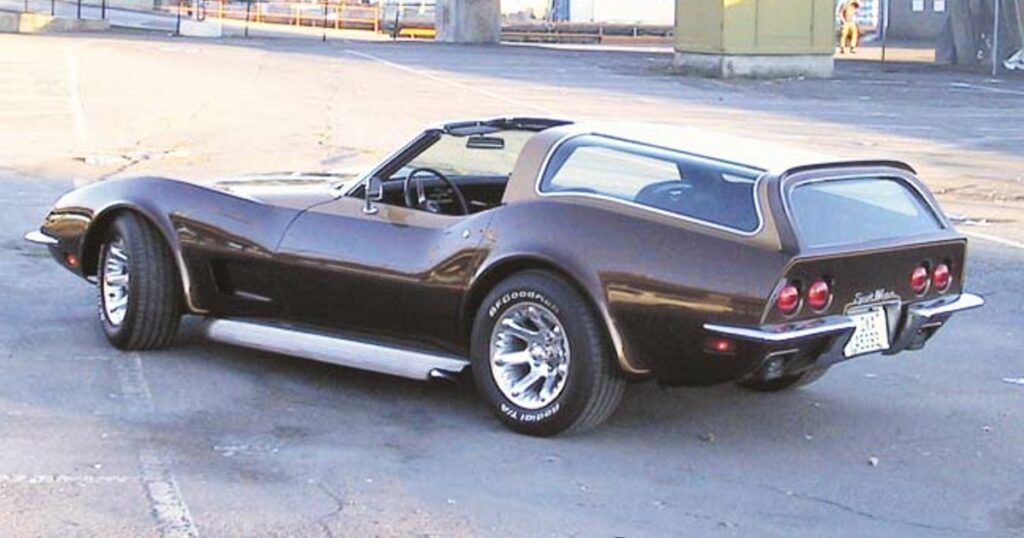
The brothers built a prototype that had a fiberglass surround around the rear glass window. This was later eliminated due to water leakage issues. Never daunted, the brothers continued working thru the issue, replacing the fiberglass surround with a tempered piece of glass that had holes drilled thru it to accommodate the hinges and the latching mechanism. A rubber weatherstrip was mounted inside the opening that created a water-tight seal against the glass. The glass was supported by two gas struts that held it open. An electronic solenoid was mounted in the driver’s side B-pillar that actuated the release for the glass. Once activated, the glass would ascend automatically to its open position until it was closed by one of the vehicle occupants. To finish the look and to deflect debris, an airfoil was mounted towards the rear of the roofline.
Though originally painted brown, the brothers re-painted their custom Corvette a Ferrari Red and, later, a BMW Cinnabar Red. They also re-branded the car as the “Corvette Sportwagon.” As the car evolved, the brothers made other changes to its design. For starters, the brothers intended the rear hatch area to be functional and spacious. In order to make that happen, the factory gas tank (which took up much of that space) was eliminated and a custom-built, rubber-lined 22-gallon fuel tank was installed where the space tire had been. A smaller, “space-saver” (donut) tire was placed in the cargo area so that, in the event of a flat tire, the vehicle occupants could at least limp the car along to a service station by using the space. Additionally, a pair of JacPac rear air shocks were installed in the car. These enabled the car to be raised and lowered via a remote knob located on the dashboard.
A newly designed hood featuring five heat exhaustion slots at the rear and a non-functioning NACA duct on the passenger side was installed on the Corvette. This same type of hood assembly would later be used on the Turbo GT cars. Moving to the car’s interior, everything forward of the cargo area remained essentially unchanged. The stock TH350 transmission and base model L-48 engine were left stock, except for the deletion of the smog system. A dual exhaust system was custom-made to bend around the fuel cell, which was slightly larger than the spare tire carrier it replaced. While the earlier seats and upholstery were re-purposed on all of the Greenwood Speed Wagons, special emblems, leather seat covers, and updated sport mirrors were added during the 1977 model year.
The car was fitted with eight-inch wide Dayton knockoff wire wheels. These were wrapped in BF Goodrich Radial T/A tires.
Greenwood’s original concept/prototype served as the foundation for the Sportwagon custom kits. The earliest of these kits were fabricated by American Custom Industries (ACI). When John Greenwood left Ohio and relocated to Florida, the Eckler’s became partners with Greenwood Automotive and began producing a variety of customer fiberglass bodies, including the Corvette Sportwagon. In addition to building complete cars, Eckler sold the body kits – either as just the wagon tops, or a complete rear assembly that included the rear fenders, wheel flares, etc. All of these kits were designed for the do-it-yourselfer. Interestingly, it has been reported that less than two-dozen Sport Wagon Corvettes were ever produced – either as a full build or as a custom kit. The Greenwoods only built one documented Sportwagon Corvette. The remainder of these cars (again, estimated around two dozen) were “kits” developed from their original car.
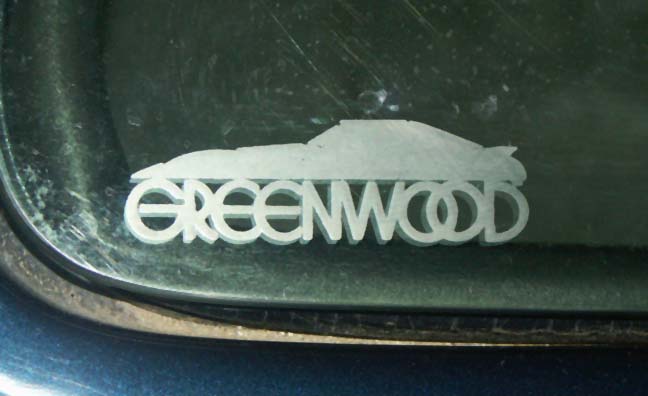
The Greenwood Corvette Sportwagon was updated in 1977. It received new sports mirrors and a newly designed hood. The hood was developed for the upcoming Turbo GT model, and it utilized NACA-style ducting that was designed to feed air into the car’s turbochargers and air-induction systems. However, on the Sportwagon, these ducts were never actually cut thru the hood and remain non-functional to this day.
If you ever happen upon a Corvette station wagon, the Sportwagon kits can be identified by their rear glass. Each kit had the Greenwood logo etched into the glass hatch. As noted earlier, the original design also called for a fuel cell to replace the stock gas tank and spare tire assembly, which allowed for a completely flat – and more spacious – cargo area. However, few Sportwagons were ever built as such due to safety issues which mandated that the original tank be retained. These “revised” Sportwagons are easily identifiable because they have a noticeable “hump” just inside the rear hatch. The Greenwood prototype still retains its 22 gallon ATL fuel cell.


